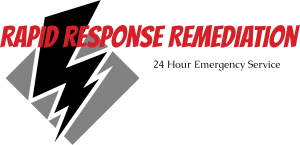Water damage occurs when water from any source infiltrates a structural area in an amount exceeding the levels the structure is designed to contain as well as whenever any amount of contaminated water intrudes a structure. Evidence of water damage can include but is not limited to, rotted wood, swelling of wood, microbial growth (molds), de-lamination of materials such as cabinets, carpet, and the rusting of metals.



